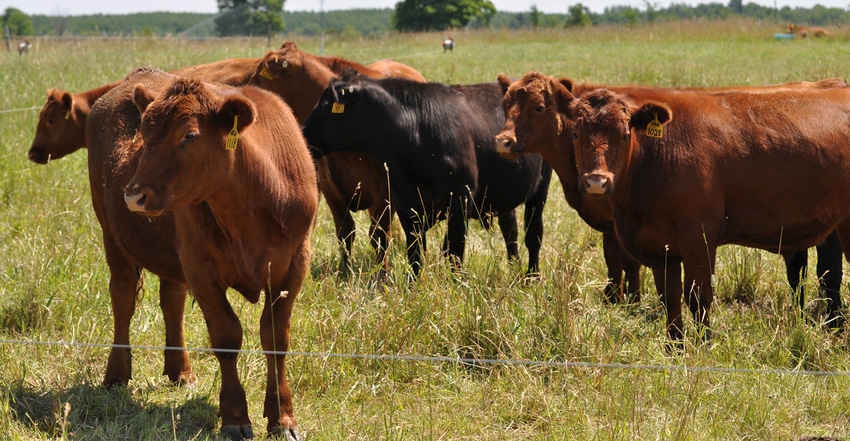
Some producers may be upset about having to pay a vet to come to the farm to issue newly required veterinary feed directives for certain antibiotics on the farm, but Zoetis Territory Business Manager, Ted Holthaus says it could very well save producers money and improve management. “It’s good to have a vet check on how you are using a product,” he says. “I know of one instance where a producer was using a product at 35 times the level he needed to.”
With a goal to help ensure safe food and sustainable use of antibiotics for animals and humans, the Food and Drug Administration now requires a VFD for all medically important antibiotics (those important in human health) administered in feed, and a veterinary prescription for all medically important antibiotics used in water.
Holthaus likens the new regulation to the airline industry. “Look at all the new regulations we have since 9/11. We’ve adapted, and we have more people flying than ever.”
The VFD is a work in progress, according to Holthaus, and a recent adjustment gives veterinarians the authority, when no other products are available, to write VFDs for minor species, such as goats, sheep and honeybees.
Mindy Thornburg, also with Zoetis, adds, “It’s important to be honest and open with your vet on what drugs are being put together, because some of them shouldn’t be administered together. Remember, too, this is just for feed-grade and water solubles. Nothing changes with injectables.”
Both Thornburg and Holthaus were featured speakers at an “Around the Water Tank” session at the Ohio Cattlemen’s Association annual meeting and awards banquet Jan. 21.
In addition to requiring VFDs for feed antibiotics, the new rule also disallows antibiotic use to promote growth or feed efficiency. In the past, Holthaus says antibiotics were used to change the microflora of the intestinal lining of the gut wall, which allows nutrients to absorb quicker. “You can still use these antibiotics for disease and not all growth modes are going away — only the ones medically important in human medicine,” he adds. “There are other options too, including implants.”
Feed additives purchased prior to the Jan. 1 VFD implementation will still need a VFD to be fed. “Also, do not lend a VFD product to a neighbor; that’s not legal,” Holthaus says.
For a licensed veterinarian to write a VFD, there must be a veterinarian client patient relationship (VCPR), which is defined as a working relationship between a veterinarian and a producer, where the veterinarian’s primary role is to advise and guide the producer in determining which medications are appropriate for their animals.
“This means the veterinarian must have sufficient knowledge of the producer’s animals and where they are located,” Holthaus says “The vet makes medical decisions that the producer agrees to follow and the vet agrees to be available for follow up. The VFD can be written for up to six months, which is at the discretion of the vet.”
According to FDA, the feed mill, veterinarian and producer will all need to keep a copy of the VFD on file for two years.
OCA supports and encourages youth
Also at the OCA’s meeting 10 scholarships were presented to outstanding youth during the luncheon. Laura Schmuki; Stark County, received the Steve R. Rauch Benchmark of Excellence scholarship.
Sierra Jepsen, Fairfield County; Emily Bauman, Adams County; Molly Cleveland, Seneca County; and Meredith Oglesby, Highland County, were awarded $1,000 Tagged for Greatness Scholarships, which are funded with the sales of the Ohio Beef license plate.
Natalie Wagner, Brown County; Britany Conkey, Defiance County; Garret Stanfield, Adams County; and Hannah Jarvis; Columbiana County, received a $1,000 Country Club Scholarship, which was funded by the putt putt course at the 2016 Ohio State Fair.
Caroline Miller, Sandusky County, was awarded the $1,000 William Cleland Memorial scholarship and Kady Davis, Carroll County was awarded the Saltwell Expo scholarship, funded by the Saltwell Western Store and Ohio Beef Expo, that will be presented at the 2017 Ohio Beef Expo in March.
The 2017 Ohio Beef Ambassadors (ages 16 to 19) were named, including: Maggie Logan, Morrow County; Alyx Flott, Stark County; and Jessica Christman, Stark County. They will spend the next year sharing their story of agriculture and educating consumers on beef consumption and the industry.
The program is sponsored by the Ohio Cattle Women’s Association and the Ohio Beef Council.
About the Author(s)
You May Also Like






